Lexus’ LC 500 marks a radical design rethink for the Japanese marque
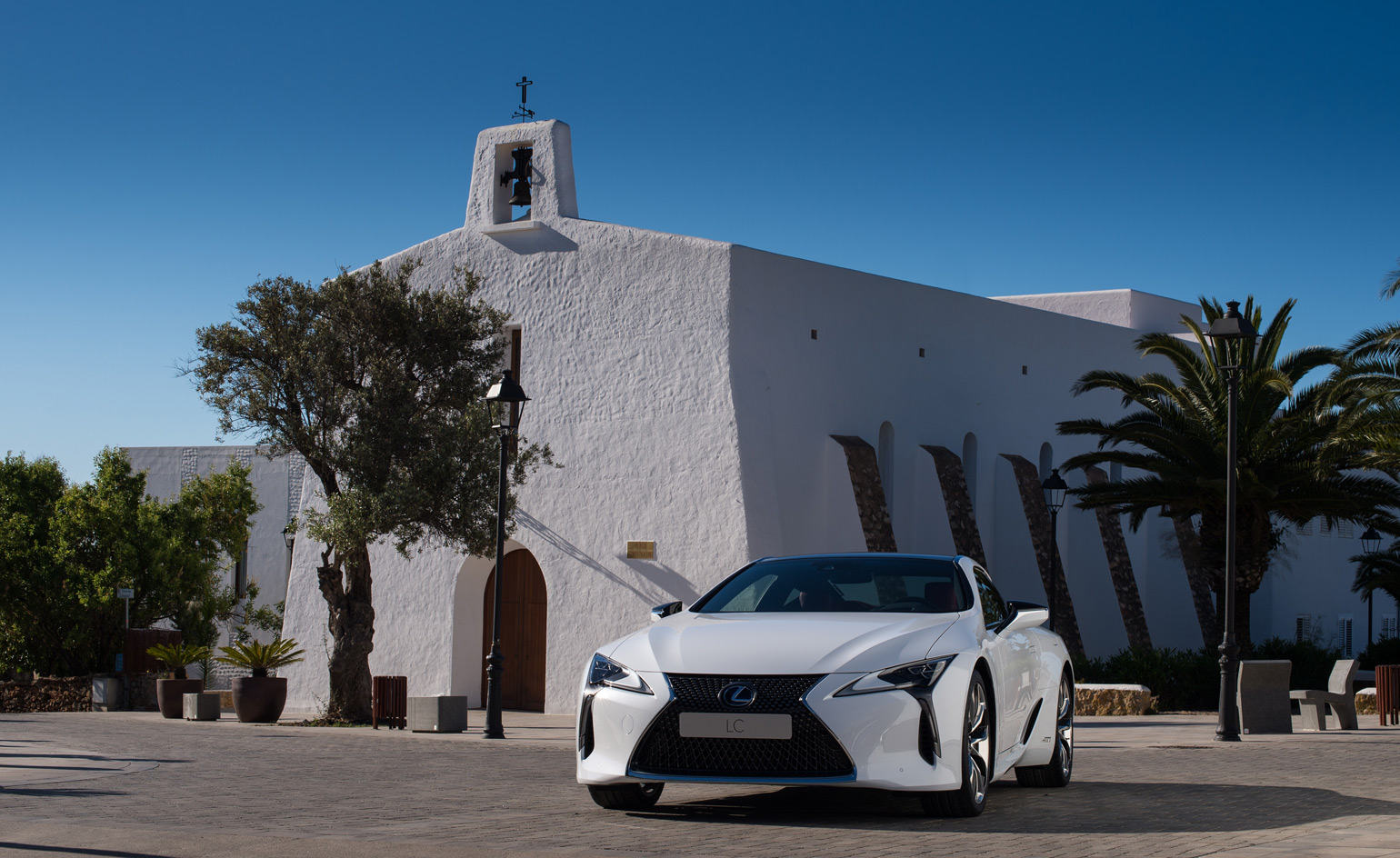
Our twenty-minute drive is scrupulously planned. It involves an elaborate theatre of surprise ‘experiences’ organised by an independent events agency and designed to make catchy and colourful social feeds for the influencers amongst our small group of journalists. So, we join a staged wedding replete with flamingo dancers, are pulled over by an acting policeman; acrobatic dancers posing as road workers almost jump on the car bonnet, as we arrive at what could have been an idyllic Ibizan bay for a crew of aggressive dancers moving to the beat of Uptown Funk, the chart-topping track by Mark Ronson who happens to be the car’s brand ambassador. It feels like an entirely missed opportunity, for the Lexus LC 500 coupé is a fine product with little need for such crude distractions.
This is a pinnacle car for Lexus, representing the Japanese marque’s bold ambitions to be a luxury maker of daring, distinctive, provocative cars that are fun to drive. Only two models of this front-engine, rear-wheel drive car are on offer – a 467bhp V8 and a more ecological hybrid linking a 295bhp 3.5-litre V6 petrol engine to an electric motor for a 354bhp power output. Lexus claims a sub-five second sprint from 0-62 mph on both models which come with ten-speed gearboxes, a first for Lexus, and a choice of three trim levels – Standard, Sport and Sport+ – with the last two swapping the glass panoramic roof with lighter carbonfibre.
The following day we convince the organisers that a car needs to be driven to be reviewed, and so are granted a set of keys for the morning. The previous day’s ride had been the hybrid LC and – as far as it is possible to judge in such a brief and interrupted time – it is fun to drive. Uphill, the V6 kicks in letting out a seductive roar, then on descend towards the coast, easing off the pedals, the engine switches to electric mode and, like a surfer, it glides into corners on clean energy and in sheer silence.
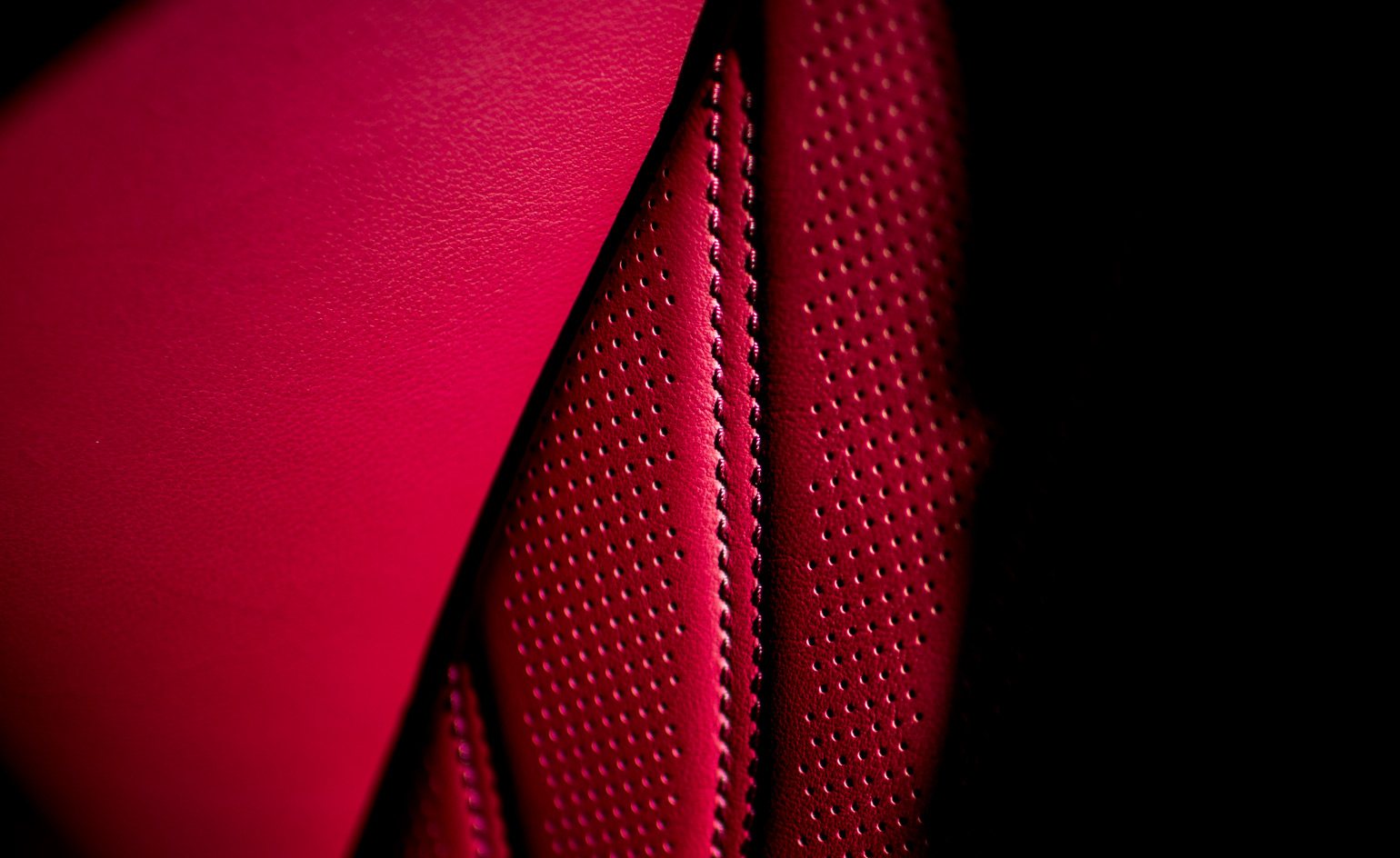
Detail of the Rioja Red leather trim
In contrast, today’s V8 model offers a continuous sweet roar as we drive along the island’s twisting hilly roads. Our bright yellow Lexus LC feels less brash in Ibiza, the sun mellowing its tone and the colour blending with the island’s wild and golden landscape as we drive inland and north through pretty villages, pass the dramatic Es Vedra rock formation as it appears and then suddenly vanishes, and onto La Granja, one of many ecological oasis hidden amongst untamed forests with the bright lights of San Antonio Bay in the long distance.
This relatively young company, born in 1989 with the launch of the LS, is generally associated with solid, safe cars – family saloons and SUVs. Yet going forward Lexus wants to be radical; it has ambitions to create exciting products, each model line boasting its own distinctive look with identifiable visual links. Elements such as the spindle grille and the use of the ‘L’ motif in the lights will help form a family bond.
The LC design is based on the LF-LC concept car of 2012. Lexus calls its current design theme ‘L-finesse’ and defines it as the application of edgy design and technology with a touch of, unsurprisingly, finesse. With its rakish looks, and the provocative angular exterior design, the LC is certainly not timid. There is a great deal of visual drama here, with elements of Japanese referencing (such as the Samurai sword) dotted in and around the car.
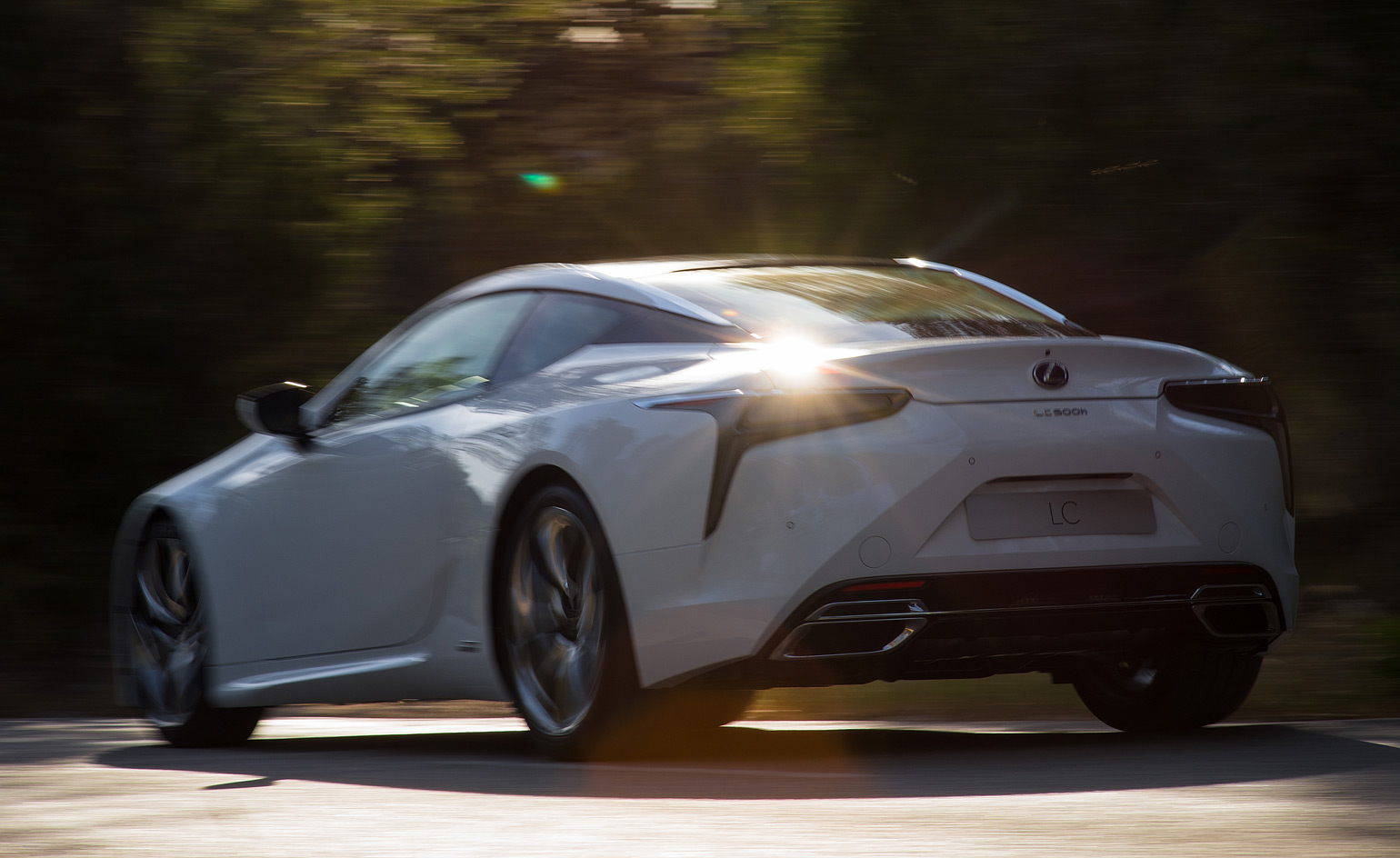
The Lexus LC 500 has slim LED taillamps
The marque describes the LC as a sports car with GT leanings – the grand touring element hinting to a car that will drive four in relative comfort over long distances. Perhaps this claim is more attuned to the hybrid model, nevertheless the low set front seats, which we’re told took some years to master, are perfectly comfortable.
The LC is very much driver-focused – it feels like a racing cockpit with the instruments enveloping the driver and the main pedals ergonomically positioned. Much effort has been placed on making the interior luxurious and sporty – tactile leather seats and steering wheel, prominent stitching, an analogue clock – although there are perhaps a few too many buttons on and around the steering wheel which can be distracting to the driver.
Some 6,000 cars will be produced annually with the US representing the main market, and the two models are equally priced from £76,595 to £90,000 depending on spec when they go on sale here in the summer.
Japanese car marques have sometimes struggled with finding their own unique visual voice. Often the visual references can be a little crude – too much of a focus on old or new Japan. Being the pinnacle car for Lexus, the LC has had to be bold to be the highest expression for this new, confident Lexus. It is a brave proposition, but also a welcome addition to the crowded sports car market.
INFORMATION
Lexus LC500, from £76,595. For more information, visit the Lexus website
Wallpaper* Newsletter
Receive our daily digest of inspiration, escapism and design stories from around the world direct to your inbox.
A writer and editor based in London, Nargess contributes to various international publications on all aspects of culture. She is editorial director on Voices, a US publication on wine, and has authored a few lifestyle books, including The Life Negroni.
-
 Explore this new Lake Como villa and its powerful, cinematic views
Explore this new Lake Como villa and its powerful, cinematic viewsA Lake Como villa by Tuckey Design Studio celebrates the history of its site and references the surrounding landscape through materiality
By Tianna Williams
-
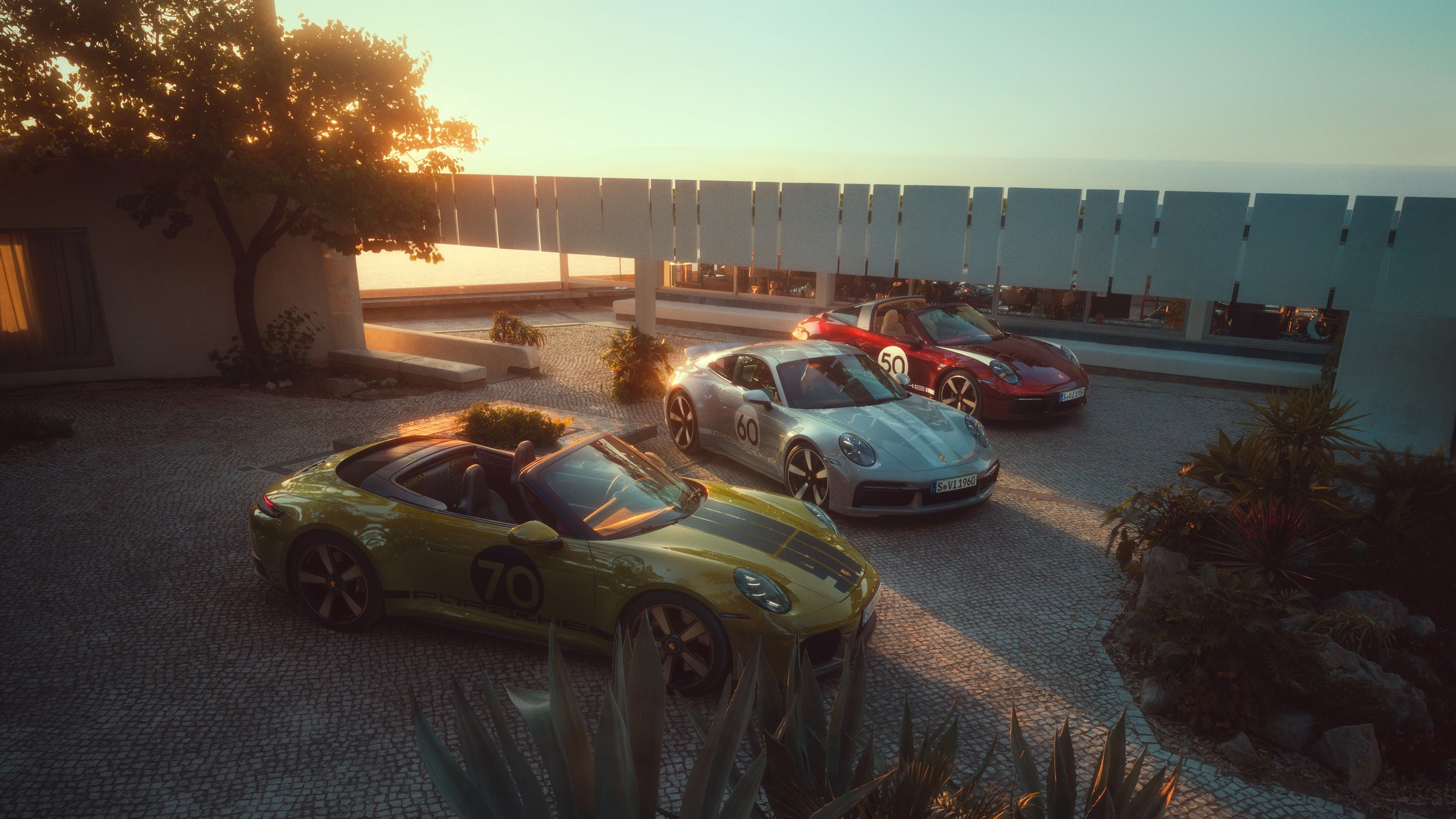 The Porsche 911 Spirit 70 harks back to the aesthetic and ethos of the 1970s
The Porsche 911 Spirit 70 harks back to the aesthetic and ethos of the 1970sAs part of Porsche’s Heritage Design strategy, the company has launched a new special edition, the Porsche 911 Spirit 70 convertible
By Jonathan Bell
-
 At the Regent Street Sensorium, architectural jelly sculptures are designed to ignite the senses
At the Regent Street Sensorium, architectural jelly sculptures are designed to ignite the sensesDelve into the history of London’s Regent Street through a jellyscape, a fragrance cloud and more – plus, for the event’s final week, two new immersive workshops (ends 27 April)
By Tianna Williams
-
 Lexus makes its mark on Milan Design Week 2025 with four new interactive installations
Lexus makes its mark on Milan Design Week 2025 with four new interactive installationsLexus’ annual installation at Milan Design Week focuses on human-centred technology and the role of data and design in shaping the luxury car of the future
By Jonathan Bell
-
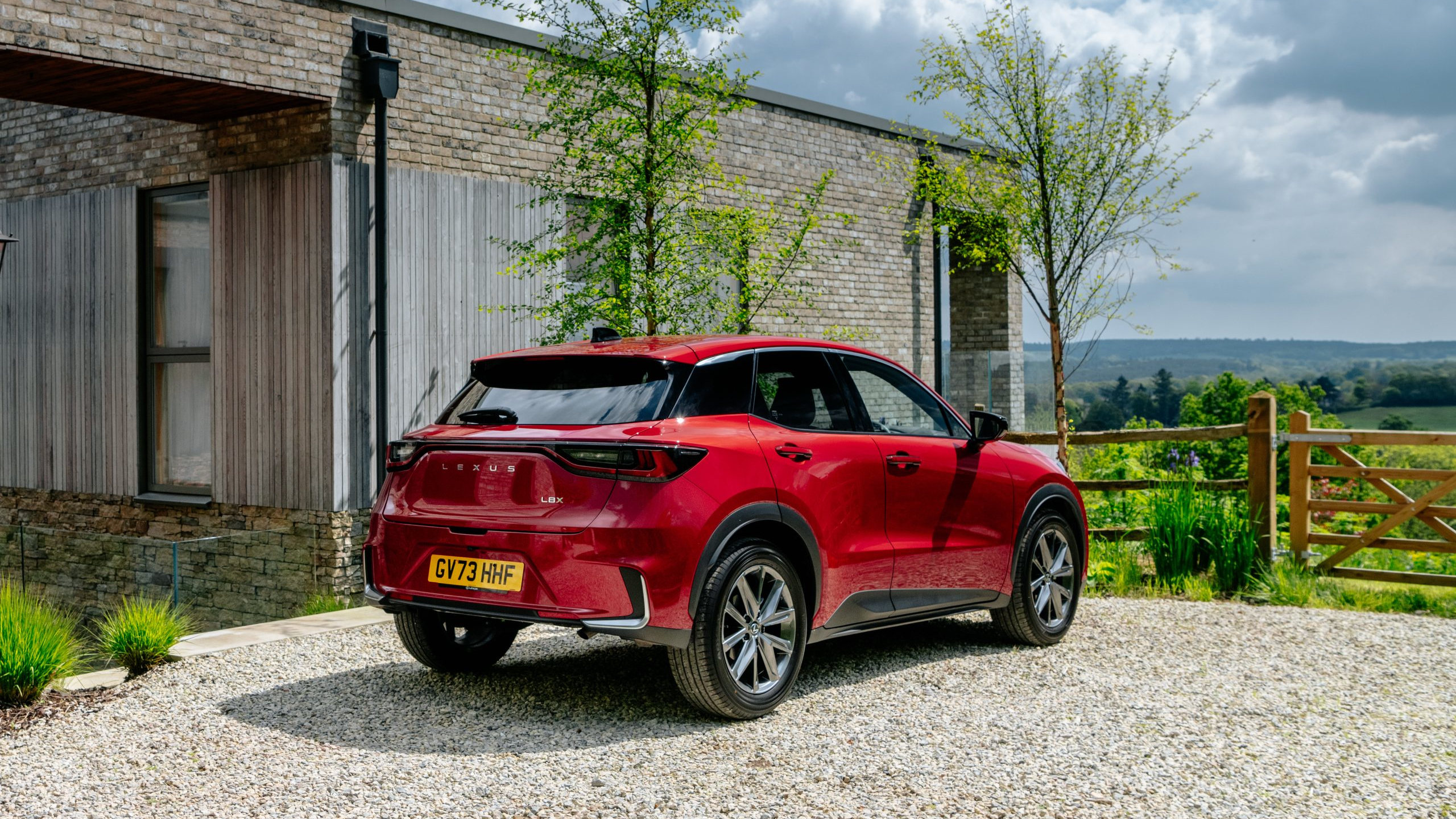 The Lexus LBX crams automotive luxury into a pocket-sized contemporary package
The Lexus LBX crams automotive luxury into a pocket-sized contemporary packageWe explore the world of Lexus’s diminutive LBX, and ponder on the validity of luxury design in a super small car
By Jonathan Bell
-
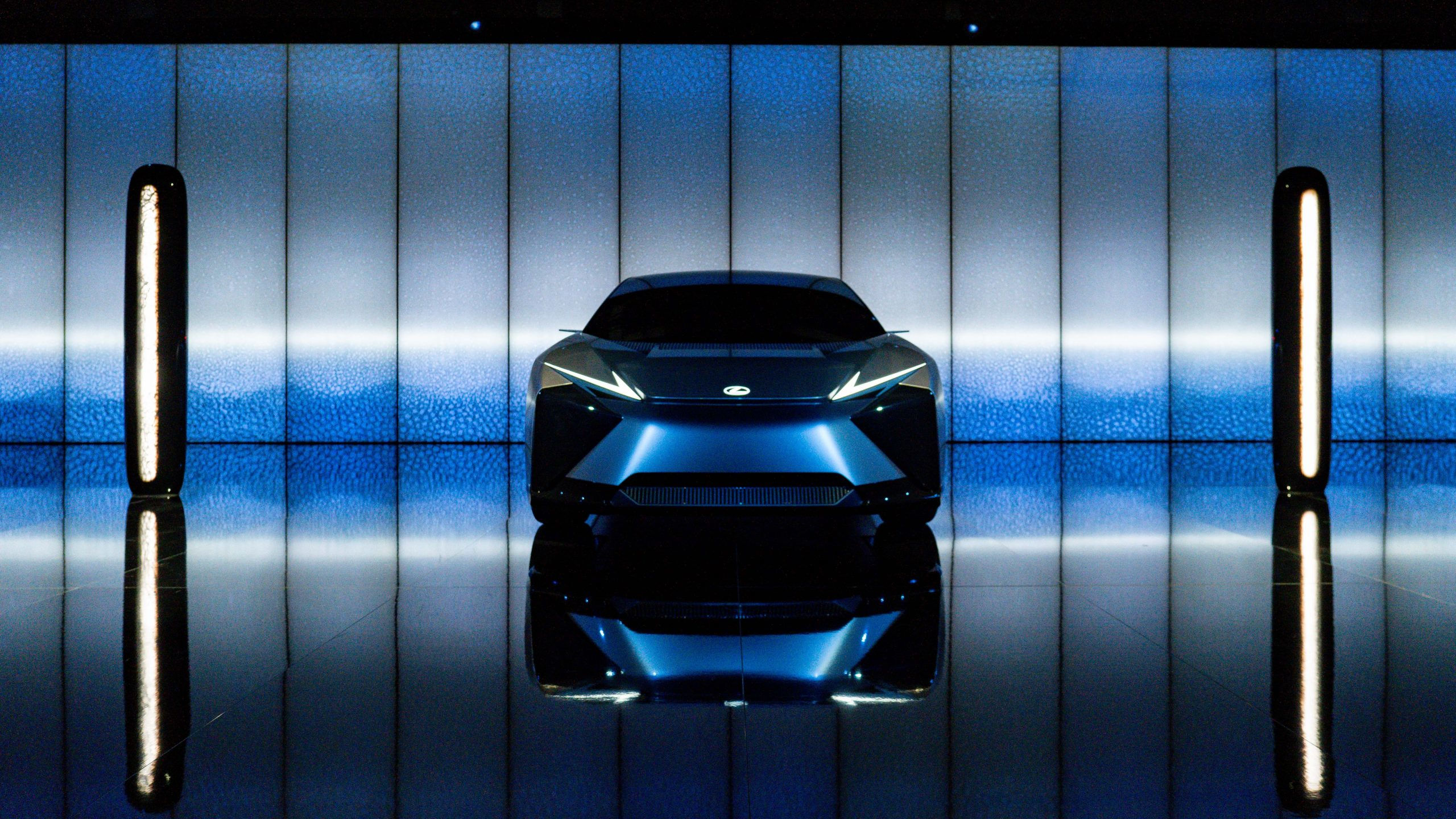 Lexus installation explores time at Milan Design Week 2024
Lexus installation explores time at Milan Design Week 2024Lexus brought designer Hideki Yoshimoto’s ‘Beyond the Horizon’ to Milan’s Art Point, part of its ongoing series of collaborations with Fuorisalone
By Nargess Shahmanesh Banks
-
 LEVC’s L380 is a truly magnificent minivan
LEVC’s L380 is a truly magnificent minivanThe London Electric Vehicle Company’s L380, is a magnificent minivan designed for upscale long-distance travel, as the maker of the London Taxi branches out into all-purpose EVs
By Jonathan Bell
-
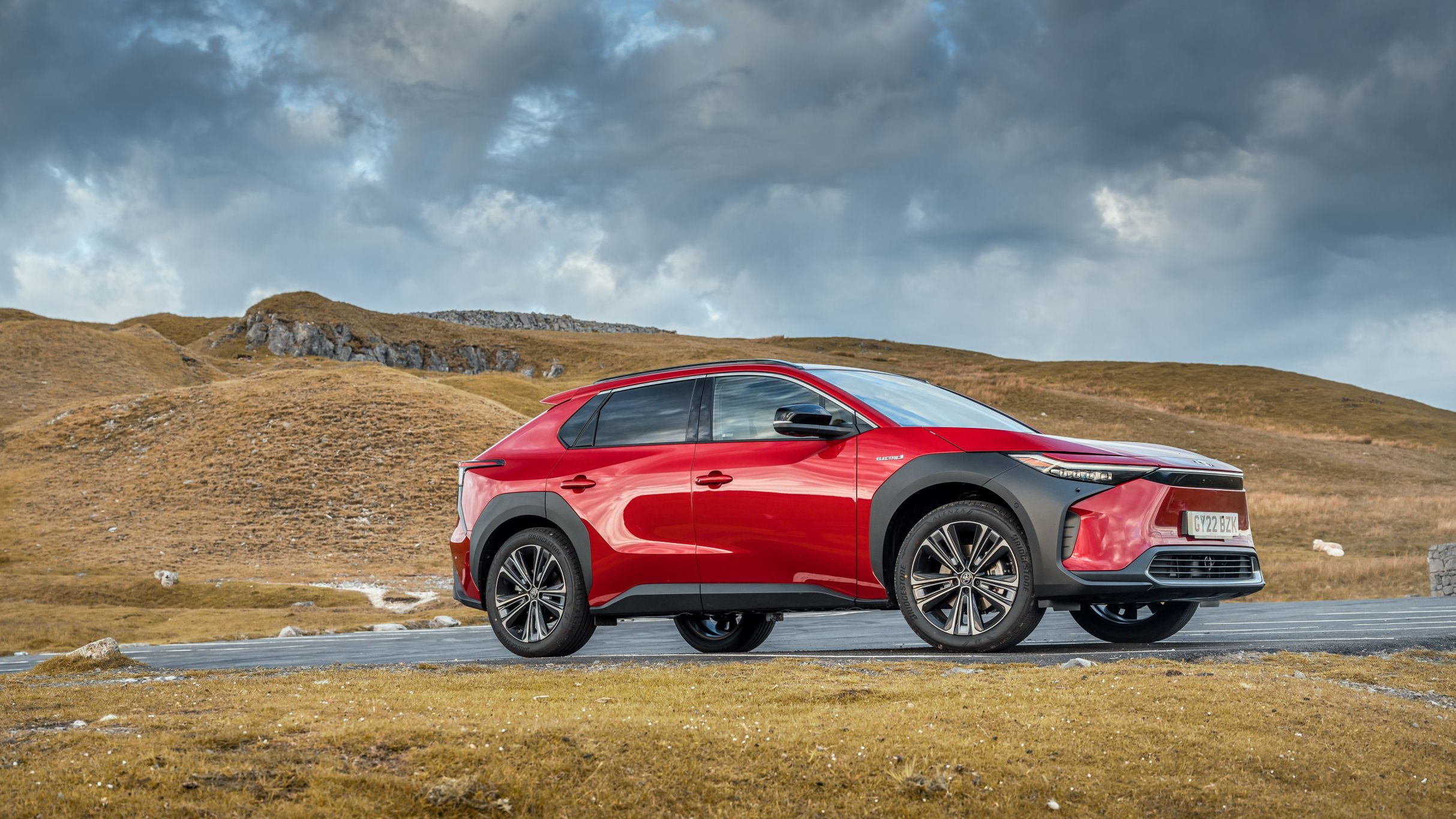 Toyota bz4X SUV is the marque’s first pure electric vehicle
Toyota bz4X SUV is the marque’s first pure electric vehicleThe Toyota bz4X is our first chance to explore how the long-standing masters of mass automobile production make an EV
By Jonathan Bell
-
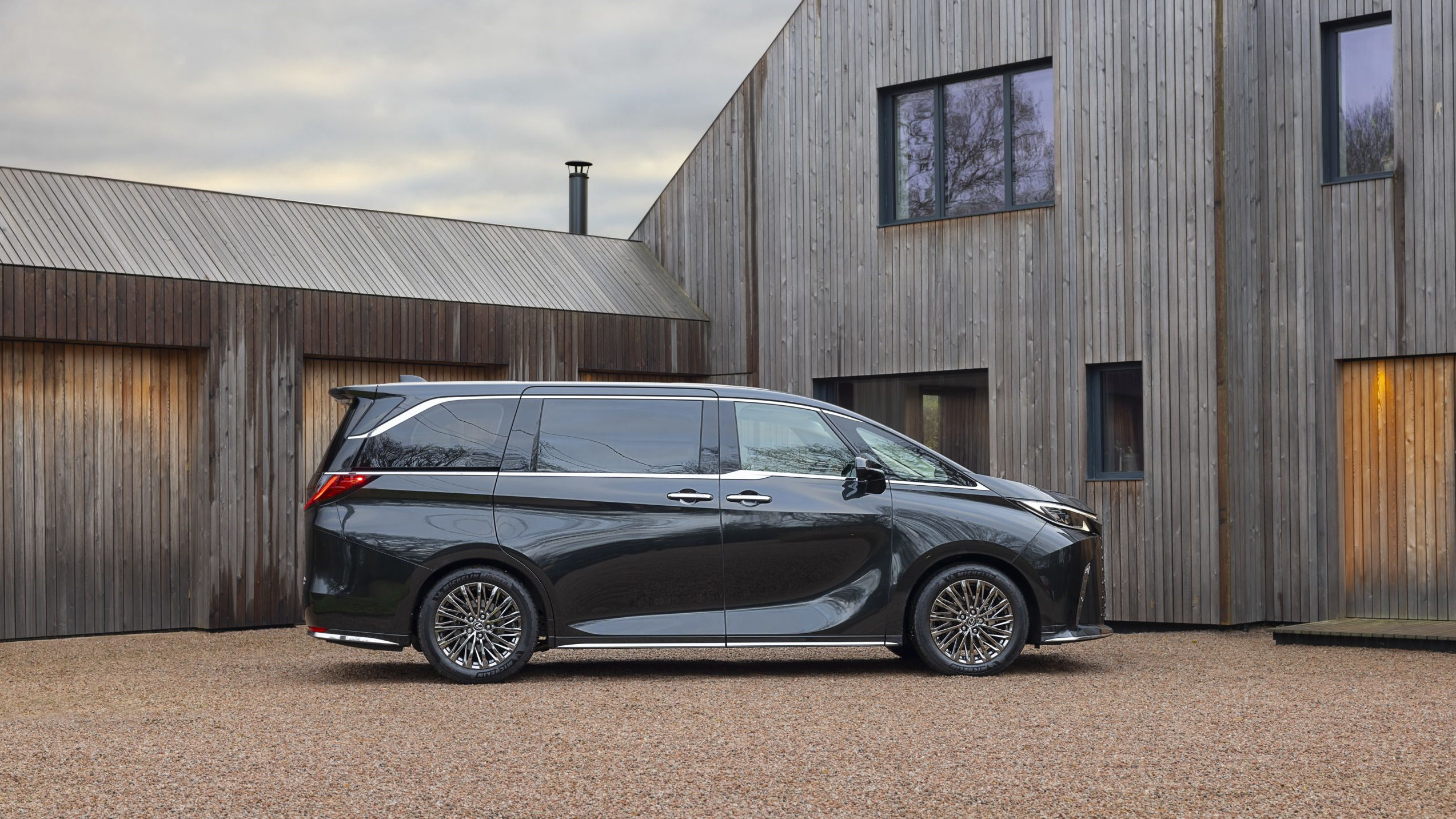 Lexus LM wants you to have the back-seat ride of your life
Lexus LM wants you to have the back-seat ride of your lifeThe back of the Lexus LM has the space, grace and accoutrements to rival a Rolls-Royce. Can this upscale minivan reinvent the luxury car?
By Jonathan Bell
-
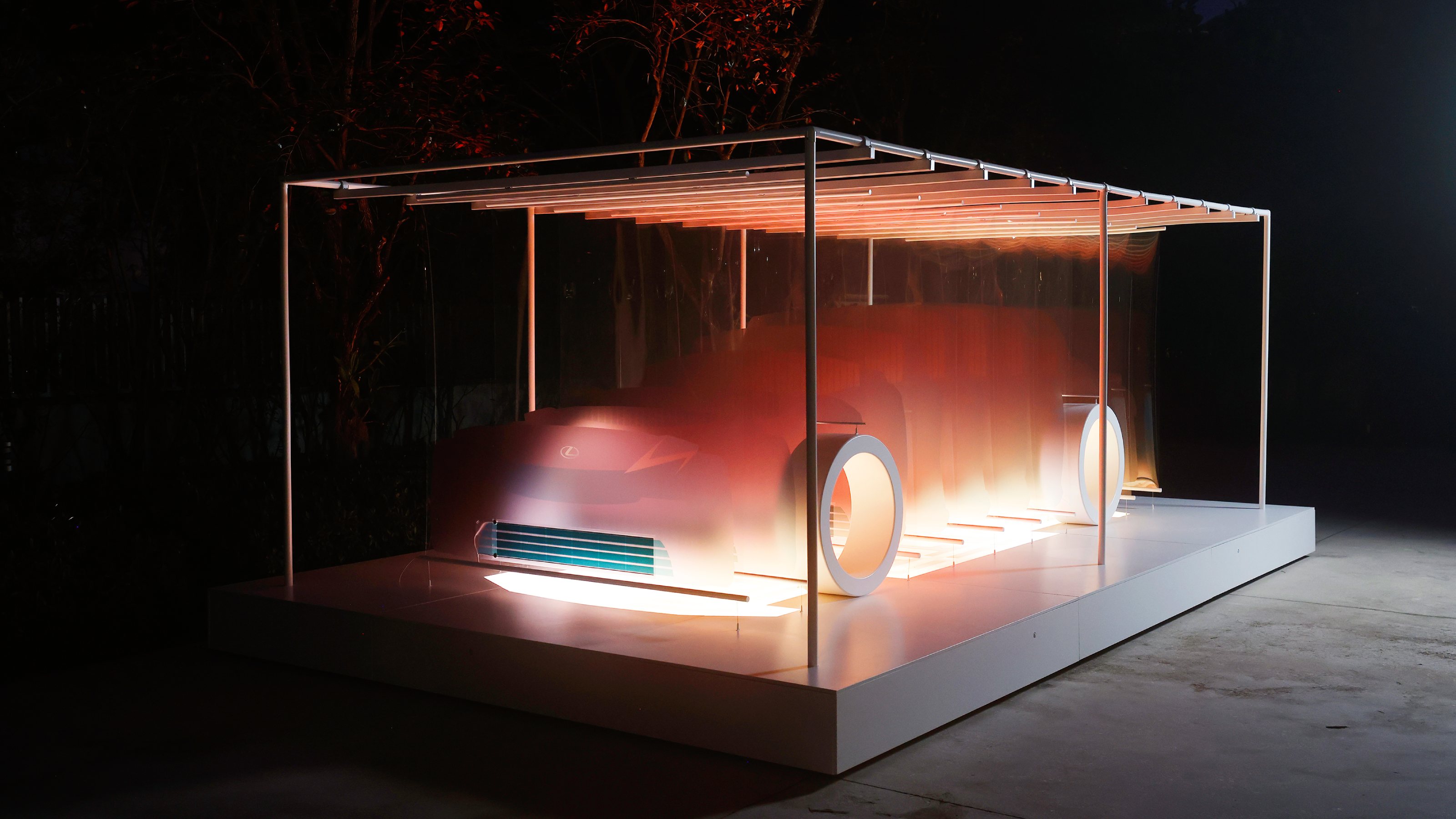 Marjan van Aubel’s ‘8 Minutes and 20 Seconds’ installation with Lexus is our Best Solar Roller
Marjan van Aubel’s ‘8 Minutes and 20 Seconds’ installation with Lexus is our Best Solar RollerThe Dutch solar designer Marjan van Aubel mounted an interactive installation in Miami to introduce Lexus’ new zero-emission LF-ZC concept car
By Adrian Madlener
-
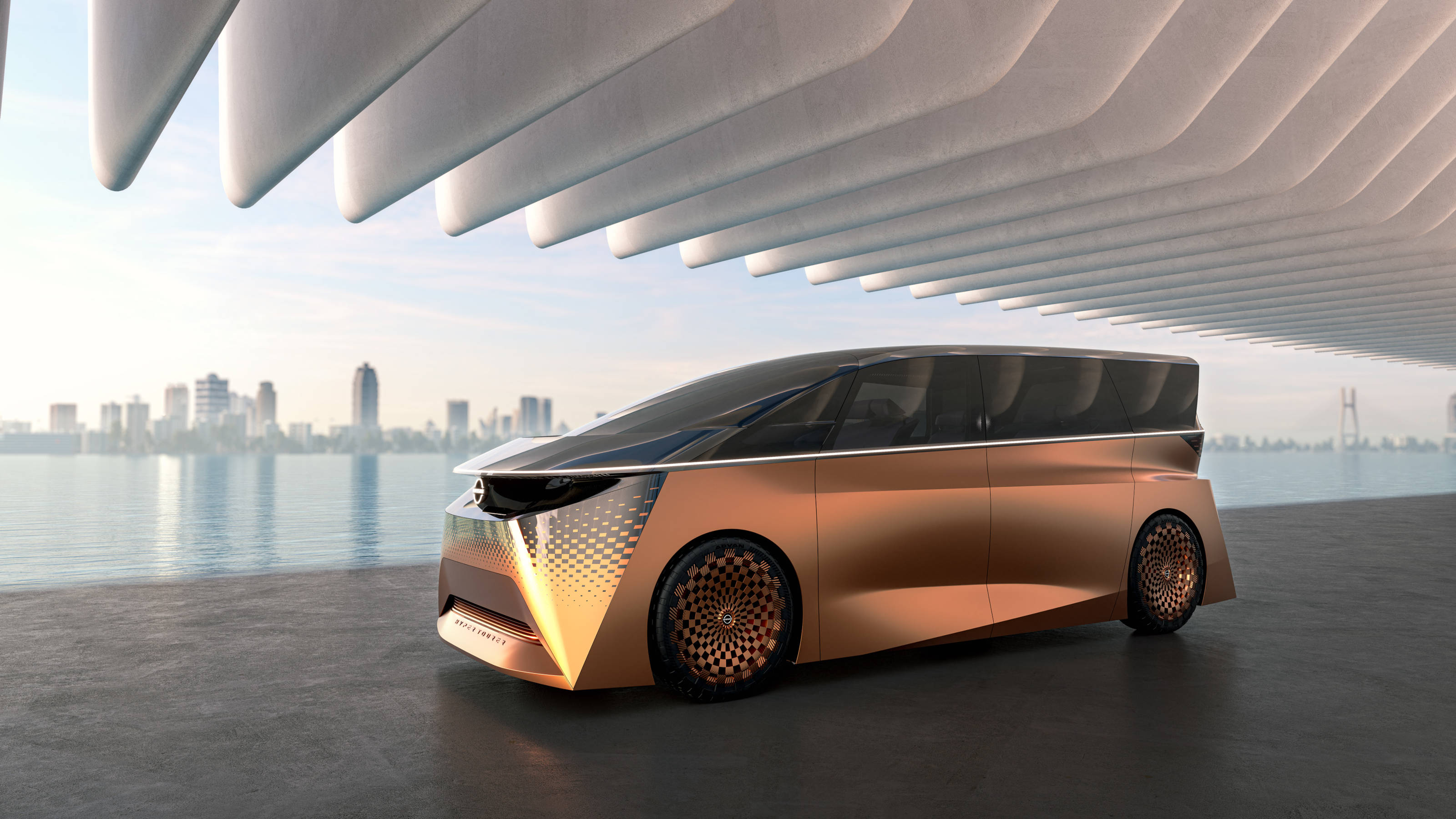 The debut Japan Mobility Show saw the country’s carmakers preview the near future
The debut Japan Mobility Show saw the country’s carmakers preview the near futureThe 2023 Japan Mobility Show offered up a vast array of futuristic transportation, from concept sports cars to autonomous taxis, and eVTOL aircraft
By Jonathan Bell